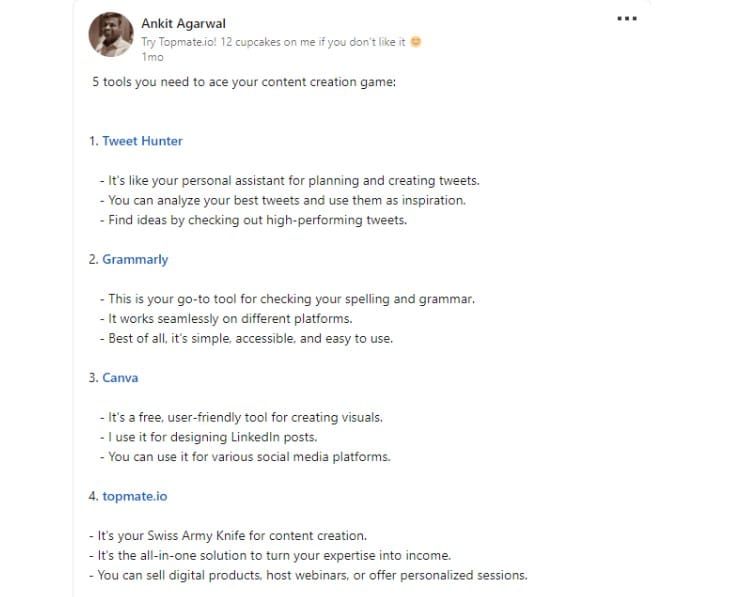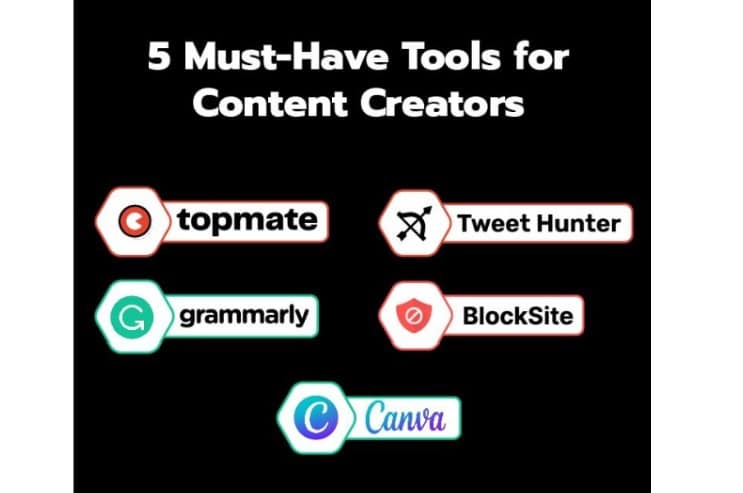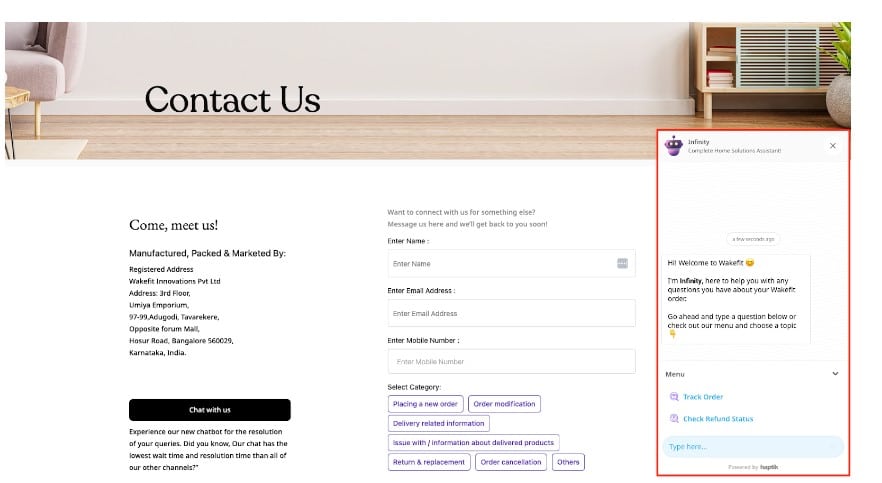Steve, a social media manager for a Martech company, handles three different platforms for his company: LinkedIn, X, and YouTube.
He can easily handle these three platforms, but here’s the problem: he’s out of touch with the company’s values and unclear on how the company wants to position itself. The result is a disconnected audience, which hinders the company’s brand identity.
If this sounds familiar, it’s time to revamp your integrated communications for authentic brand messaging.
In this article, we’ll uncover six strategies to strengthen your integrated communications and unify your brand messaging.
Let’s get started.
Understanding integrated communication
Integrated communication is the process of unifying the brand’s messaging to make it consistent across all channels and touchpoints—online and offline.
The goal is to create a strong, authentic brand identity that resonates with customers.
For example, Clean Origin stands out as a brand that masterfully employs integrated communications to advance its purpose for the sustainability of lab-grown diamonds.
With a mission rooted in ethical sourcing, the company integrates its message across various communication channels and touchpoints.

Here’s another example from topmate. The brand’s core value is to empower creators by helping them monetize content creation and mentoring.



Even their employees on LinkedIn talk about empowering the creator economy. This stitches their brand messaging together.
Why is integrated communication important?
In the digital world, no brand relies on just one platform to communicate with its target audience.
An e-commerce brand may use channels like Instagram, Pinterest, TikTok, and even YouTube to communicate with its audience.
A SaaS brand would use channels like LinkedIn, Twitter, and podcasts (audio content).
Both businesses have different target audiences and channels, but brand communication remains the same. Because each brand is communicating to a similar audience on each marketing channel, their brand’s messaging needs to be uniform across each platform. But why?
There are three reasons integrated communication marketing is important for your business:
- It creates consistency across the entire customer journey
- It boosts the effectiveness of marketing campaigns
- It enables brand-building
6 strategies to leverage integrated communication for an authentic messaging
Without a rock-solid integrated communications strategy, it’ll be impossible for you to personalize the buying customer experience.
So, let’s dive into six strategies to help you unify your brand messaging.
Strategy #1: Maintain consistent messaging
Maintaining consistency in your brand messaging means emphasizing your brand values across each platform. Your messaging should have a consistent tone, style, brand colors, and key values.
For example, Zomato, a popular food delivery platform, maintains a humorous and conversational tone on its social media platforms. Whether they’re commenting on another brand’s social media posts or sharing content on its digital channels — it reflects humor.
To implement this level of consistency in your brand messaging, do the following:
- Use your mission statement as the starting point to give direction to your brand messaging
- Create a detailed brand guidelines document that’ll contain all the branding information
- Use your brand logo on all your marketing collaterals to enhance brand recognition
- Familiarize your employees with your brand values and brand guidelines

Strategy #2: Adopt a customer-centric approach
To adopt a customer-centric approach for your brand messaging, you must first understand the customer’s behavior and pain points. Then, you’ll be able to create personalized messages and consistent experiences to connect with the audience on a deeper level.
For example, suppose you’re a SaaS brand offering a productivity solution. In that case, the pain points of your target audience include:
- Not being able to figure out how much time they’re spending on a specific task
- Inability to track time accurately
- Lack of a tool to organize to-dos and upcoming tasks
These pain points ultimately lead to non-existent productivity during work hours. So, when you have to offer a solution or communicate with your target audience, you’ll integrate these pain points into your messaging.
But the question is, how do we identify the customer’s behavior and pain points?
- Track visitor behavior and activity on your website and understand the pages and links they’re exploring.
- Collect data from customer success and sales teams from the conversations they have had in the past with customers.
- Collect feedback from your target market on their needs and challenges in their work.
Using these methods, you can analyze your customers’ pain points and integrate these pain points into your messaging.
Strategy #3: Cross-integrate your messaging across different channels
Since your brand is present on different channels, your goal is to keep the messaging consistent across each channel, right? And how can you achieve this?
Simply cross-integrate your channels. By doing so, you’re distributing your brand’s messaging across different channels. Plus, your brand is visible to a wider target audience.
But how to cross-integrate your messaging across different channels? Here’s how:
- Adapt the format and style of the message to fit each channel’s characteristics. For example, use images and Reels on Instagram with a casual, informal tone. On the other hand, create long-form text posts in a professional tone on LinkedIn.
- Use social media scheduling tools like Simplified and Buffer to optimize your social media platforms for each platform.
- Use tools like Zapier to integrate your social publishing and auto-publishing your posts on different platforms.
Strategy #4: Keep a balanced digital and in-person experience
Picture this: your favorite home decor and furniture store emphasizes offering premium products and incredible customer quality. But when you visit their online store, you only get an unapproachable support team.
Your shopping experience is likely an unpleasant one. That’s why you need to balance online and in-person experiences.
For example, Wakefit has both online and physical stores. The brand provides responsive support to its customers through the website and offers a personalized, strong customer experience at its physical store.

Another good example is H&M, a sustainability clothing and home decor brand. The brand makes clothes by recycling older clothes—this is the messaging they promote on their website and their social networks.

They’ve integrated their digital brand messaging with their in-store experience. Here’s how.
Anyone who wants to donate older or used clothes, whether H&M’s customer or not, can donate the clothes. All they want is that the clothes people give should be recyclable. In return, the brand will give an incentive, i.e., a voucher that the shopper can use when purchasing from the brand the next time.
Strategy #5: Focus on employee training
But why train employees when your focus should be on integrated communication? Well, if your employees aren’t well-versed in your brand’s values, they won’t be able to churn out content that resonates with your target audience.
And that will negatively impact your brand identity.
So, you must train your employees on your brand’s mission and values and teach them how they can integrate these values into their communication.
For example, since Topmate’s mission (the example we mentioned earlier) is to empower creators and the creator economy, their employees talk more about the creator economy on LinkedIn. That way, people on LinkedIn learn about what the brand does from employees and not the brand itself.
But imagine if there’s a disconnect between the employee’s messaging and the brand’s actual messaging. Even though people learn about the brand from its employees, they won’t engage with it further. That’s why instilling the mission statement and brand values in your employees is crucial.
Here are a few ways to familiarize employees with your brand values:
- Give your employees a handbook of your brand’s core values and verbally tell them about each value and why they matter.
- Conduct quarterly or monthly all-hands where the leadership team can share real-life examples of brand values in action.
- Implement a real-time peer-to-peer recognition system where employees can exchange knowledge.
- Create core value challenges to help employees understand the values in detail.
Strategy #6: Seek customer feedback and adapt
The right way to continuously improve integrated business communication is by getting customer feedback.
- Which topics, according to customers, aren’t being addressed by the brand but are relevant to customers?
- Which communication channels do customers currently like?
- Which channels do they expect the brand to be active on?
Occasionally, you need such feedback from customers to improve your integrated communication. So, ask for feedback from customers and improve.
Here are a few ways to seek customer feedback:
- Leverage email marketing and interact with your subscribers directly, where you can embed interactive elements like polls and surveys using tools like Mailmodo and ask for feedback.
- Use form builders like Typeform and Jotform, build a questionnaire, and share with your customers where they can share feedback.
Once you’ve collected feedback from customers, here’s what you should do:
- Set up an interview with customers if you want to get detailed feedback from them.
- Respond quickly to feedback and acknowledge inputs from customers.
- Actively listen to what customers are saying.
Ditch disconnected marketing communication
Losing your brand identity due to misalignment in brand communication is easy. It’s happened with several brands in the past, and you don’t want that to be you.
You can avoid this dreaded fate by leveraging an integrated communication strategy. With the six strategies we’ve shared today, you can finally ditch the disconnected marketing communication and mantra altogether.
Doing so will help take your PR strategy to the next level. Are you ready to jump on the bandwagon?








